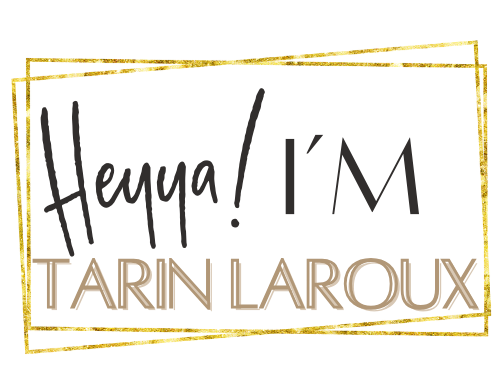5 Common Mistakes
to Avoid
When Creating Your Evergreen Digital Product Suite for Online Coaches
Y’know what? Starting an online coaching business can be downright overwhelming. Define your message. Claim your niche. Only do 5-day launches. No live launches.
Most importantly – grow your audience.
Understand their actual desires and real-world problems.
Bringing a digital product suite into the mix can help you scale your business and bring in consistent revenue. Who doesn’t want consistent revenue, am I right? Creating a successful digital product suite is easier said than done-y’all won’t even believe it! But it’s important to realize and avoid these five common mistakes I’ve seen online coaches make when creating their evergreen digital product suite:
Mistake #1: Creating too many products too soon
Mistake #2: Ignoring market research
Mistake #3: Focusing too much on the product and not enough on the marketing
Mistake #4: Not optimizing for conversions
Mistake #5: Neglecting to update and improve your products
Hey babe, you’ve got a podcast and an evergreen sales funnel, so let’s make sure you’re not making any rookie mistakes. We know you’re here to skyrocket your coaching business and avoid the common pitfalls that can trip you up.
Here are the five biggest mistakes to avoid when creating your evergreen digital product suite for online coaching. Ready to kick some ass? Let’s go!

pin for later
Definition of a
Signature Offer Suite
First things first, let’s talk about your signature offer suite. This is your collection of products designed to work together to solve your ideal customer’s needs. It’s not just about throwing a bunch of products out there; it’s about creating a cohesive, irresistible package that showcases your unique value.
By bundling your products strategically, you make the buying process easy for your clients while boosting your revenue potential. Your signature suite isn’t just a random assortment; it’s a well-planned suite that hits all the right notes for your audience.
But babe, remember, creating this takes careful planning and a deep understanding of your target audience. Consider pricing, packaging, and how each product fits into the larger picture. Nail this, and you’ll set yourself apart in a crowded market, building a sustainable, profitable coaching business.

Mistake #1:
Creating Too Many Products Too Soon
Don’t get trigger-happy with product creation. One of the biggest mistakes is creating too many products too soon. Quality over quantity, always. Start with one or two killer products that your audience will love. Establish a solid foundation first, then you can expand. This approach avoids overwhelming your clients and ensures you deliver real value.
Launching with too many products can dilute your brand and confuse your audience. When clients are presented with too many choices, they might feel overwhelmed and end up not buying anything. Focus on perfecting a couple of products first, ensuring they provide maximum value and resonate deeply with your target market.
Moreover, starting small allows you to gather essential feedback from your initial offerings. This feedback is invaluable for refining your future products and understanding what truly works for your audience. It’s all about building a strong, focused product suite that you can expand over time, based on real insights and proven success.
Mistake #2: Ignoring Market Research
Ignoring market research is like shooting in the dark. You need to know your audience inside out—their interests, pain points, and motivations. This isn’t just guessing; this is backing it up with solid research. Know what they need and how they think, and you’ll create products that they actually want to buy.
Market research isn’t just a one-time task; it’s an ongoing process. Regularly engaging with your audience through surveys, social media interactions, and feedback forms helps you stay attuned to their evolving needs. This constant engagement ensures that your products remain relevant and continue to address the real issues your clients face.
Additionally, thorough market research allows you to position your products more effectively. By understanding the competitive landscape, you can highlight your unique selling points and differentiate your offerings. This strategic positioning can significantly impact your marketing efforts and boost your sales.
Mistake #3: Focusing Too Much on the Product and Not Enough on the Marketing
Creating an amazing product means nothing if no one knows about it. It’s not just about making something great; it’s about marketing it effectively. Balance your product development with solid marketing efforts. Use social media, email newsletters, and online ads to get the word out. Without marketing, even the best products can fall flat.
Effective marketing requires a well-thought-out strategy. This includes identifying the right platforms to reach your audience, crafting compelling messages, and utilizing various marketing techniques such as content marketing, influencer collaborations, and paid advertising. A comprehensive marketing plan ensures your product gains the visibility it deserves.
Remember, marketing isn’t a one-size-fits-all approach. Continuously test and analyze your marketing efforts to see what works best for your audience. Be ready to pivot and adapt your strategies based on performance metrics and feedback. This agility will help you maximize your reach and impact.

Mistake #4: Not Optimizing for Conversions
Marketing drives traffic, but your goal is to convert that traffic into sales. Optimizing for conversions is crucial. This means having compelling copy, clear calls-to-action, and a streamlined user experience. Analyze your data, test different strategies, and always look for ways to improve. The easier it is for your audience to buy, the more sales you’ll make.
Conversion optimization is an ongoing process. Regularly review your sales funnel to identify any bottlenecks or drop-off points. Use tools like A/B testing to compare different elements of your website and see what resonates best with your audience. Small tweaks can often lead to significant improvements in your conversion rates.
Additionally, consider the entire customer journey, from initial interest to post-purchase follow-up. Providing an excellent user experience at every touchpoint builds trust and encourages repeat business. Personalized emails, timely support, and easy navigation can make a big difference in how your audience interacts with your brand.
Mistake #5: Neglecting to Update and Improve Your Products
Your digital product suite isn’t a one-and-done deal. It needs regular updates and improvements to stay relevant. Keep an eye on industry trends and user feedback. Updating your products shows your customers that you value them and are committed to their success. Plus, staying current keeps you ahead of the competition.
Product updates can include adding new features, improving existing content, or even launching complementary products. This not only keeps your offerings fresh but also provides additional value to your customers. Regular updates demonstrate your dedication to providing the best possible solutions and maintaining a high standard.
Moreover, continuously improving your products based on feedback helps you build a loyal customer base. When clients see that you’re responsive to their needs and consistently enhancing your offerings, they’re more likely to stick around and recommend your services to others. This ongoing relationship is key to long-term success.
FREE PINTEREST SETUP GUIDE
Conclusion
Alright babe, let’s wrap this up. Avoiding these five mistakes will set you on the path to creating a successful evergreen digital product suite for your coaching business. Start small, do your research, balance product creation with marketing, optimize for conversions, and keep improving. Take these actions and watch your business thrive. Let’s make your coaching biz the talk of the town!












